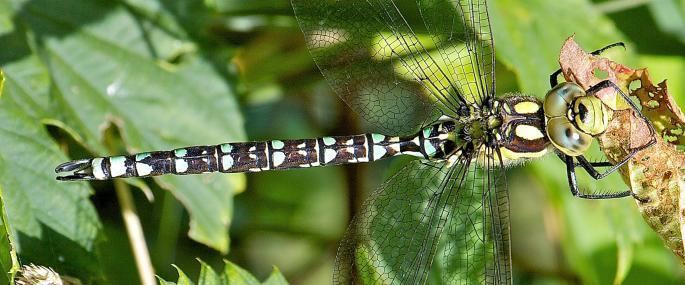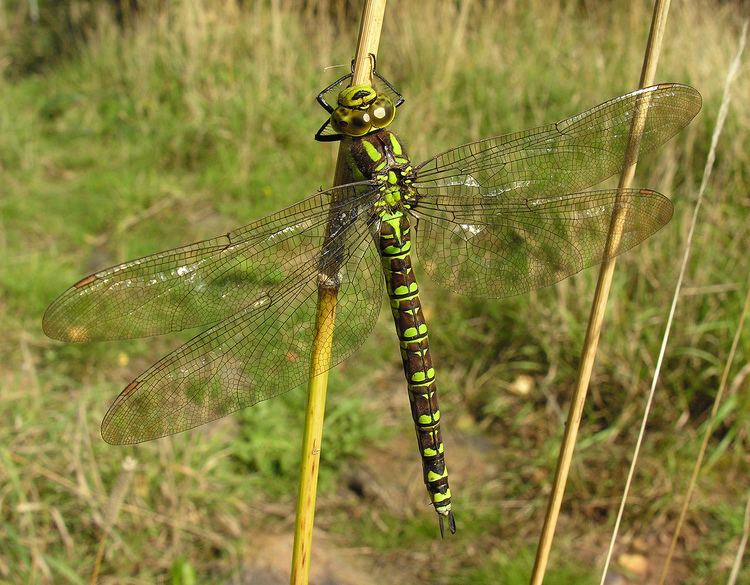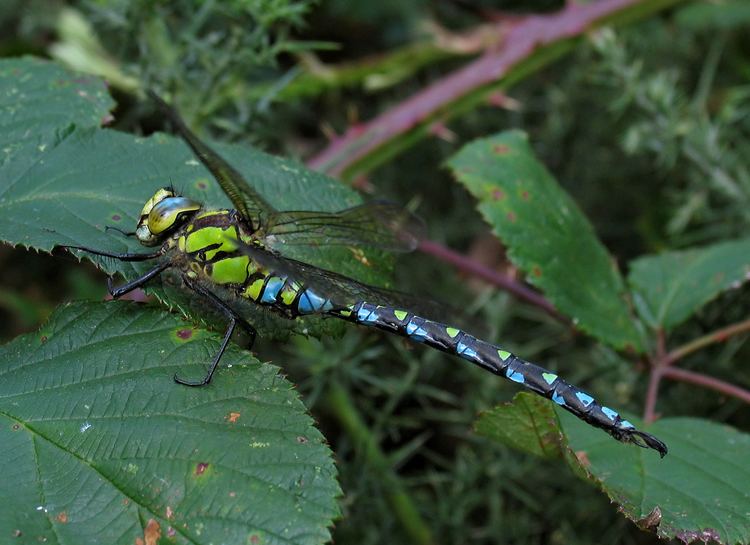Subphylum Hexapoda Suborder Anisoptera Scientific name Aeshna cyanea Rank Species | Family Aeshnidae Higher classification Aeshna | |
 | ||
Similar Aeshna, Odonate, Dragonfly, Migrant hawker, Libellula depressa | ||
Southern hawker dragonfly in a tree insects in cornwall
The southern hawker or blue hawker (Aeshna cyanea) is a 70 millimetres (2.8 in) long species of hawker dragonfly.The species is one of the most common and most widespread dragonflies in Europe. The total range is West Palearctic and covers a large part of Europe (to Scotland and southern Scandinavia in the North to Italy (without the Southwest) and the northern Balkans to the South); the Eastern boundary is formed by the Ural and the West by Ireland. It is also found in Northwest Africa (Algeria). In Central Europe the species is very common
Contents
- Southern hawker dragonfly in a tree insects in cornwall
- Southern hawker dragonfly
- Behaviour
- Larvae
- References

It is large, with a long body. It has green markings on the black bodies, and the male also has blue spots on the abdomen.

The southern hawker breeds in still or slow-flowing water, but will wander widely, and is often seen in gardens and open woodland. This is an inquisitive species and will approach people.

The adult eats various insects, caught on the wing. The nymphs feed on aquatic insects, tadpoles and small fish ambushed in the pond they frequent until they emerge as adults in July and August after three years’ development.

Southern hawker dragonfly
Behaviour
This is a large, brightly coloured dragonfly. The males are often seen patrolling by a ponds edge or river, where they fight away intruders, crashing into rival males and spiralling through the air. The females are quite inconspicuous when they lay their eggs, but they sometimes give away their spot by clattering up from the reeds.
Larvae
The eggs are laid by jabbing the abdomen into rotting vegetation or wood. The eggs hatch in the spring, after being laid in the previous summer or autumn. The larvae live on small tadpoles and invertebrates. They emerge after 2–3 years.
